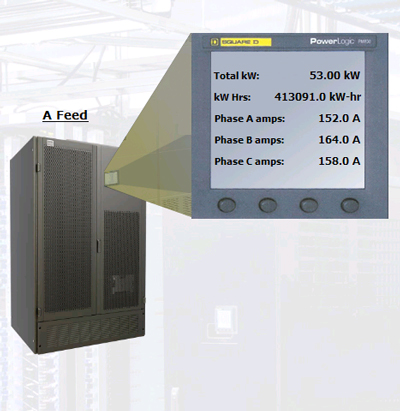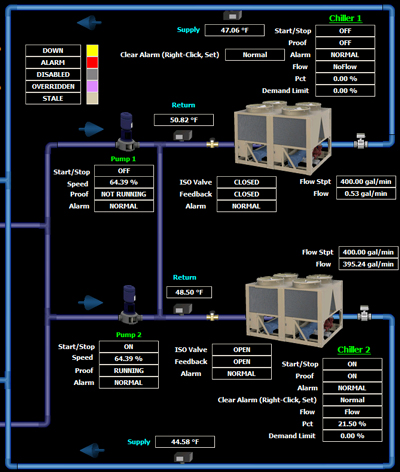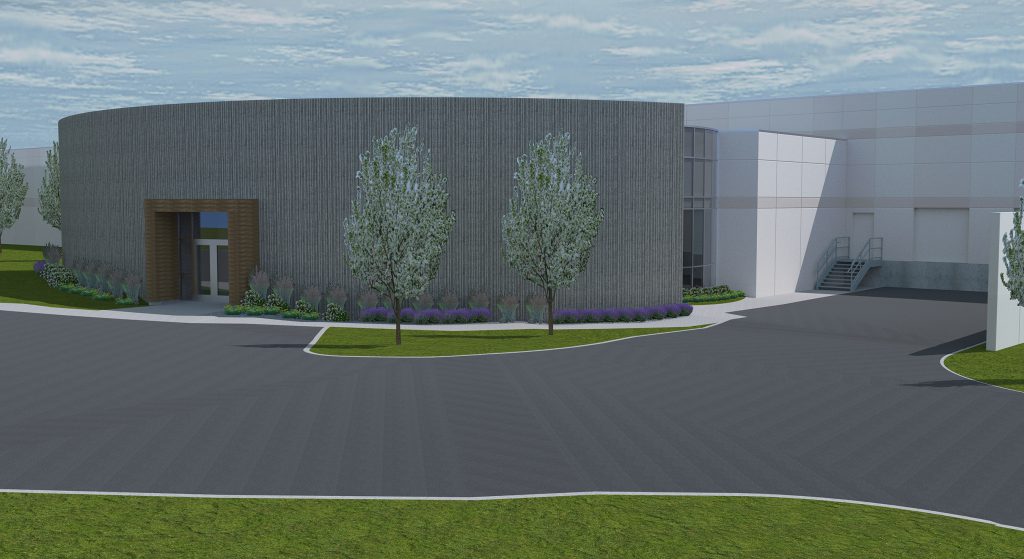A Building Management System (BMS) is a crucial component to any data center facility. It allows for centralized management of critical infrastructure equipment, and ensures operations are being run securely and efficiently.
Data center facilities can host millions of dollars in equipment in multi-tenant “colocation” centers, which is why it’s critical they are effectively maintained. These facilities need proper climate control, fire suppression and backup power at every site that has physical security.

Each of these systems needs to be monitored and maintained through a Building Management System. The BMS is backed up by redundant servers, and provides monitoring and alerts to ensure all aspects of the system are operating correctly. When considering a BMS, it is important that they comply with ASHRAE TC 9.9 standards for A1 environments and have a portal for customers’ views of the environment.
The Building Management System monitors each area in the following ways:
- Power distribution must be consistent and clean once it reaches the computer equipment. The system helps ensure there are no power surges or inconsistent “spikes” of power that could damage the equipment. It also provides alerts to system managers if there are any power failures, surges or other issues with the power system.
- Temperature control is vital for any facility. The humidity needs to remain at 45 percent, because too much can damage the equipment and cause it to fail. The temperature needs to be consistent between 70 and 74 degrees, and can be adjusted or have circulation added as necessary by the BMS.
- Physical security guarantees only the appropriate and approved individuals enter the colocation center at all times. This is managed on-site through keycard readers, biometric scanners and tailgating sensors to gain access and move throughout the facility. The Building Management System can be set to sound an alarm and notify operators if there is a physical breach of the system or entrance at a time when no one should be in the building.
- The fire suppression component uses a Very Early Smoke Detection Apparatus (VESDA) tied to the Building Management System to alert operators or sound an alarm if there is a potential fire.

In addition, the BMS also collects and stores historical data that can be used for trend analysis and examination. The data can help operators predict when there might be an issue or when maintenance needs to occur within a certain area of the BMS. The information comes through in real time, so engineers can immediately resolve an issue.
A Building Management System can help operators monitor the facility from any location, on any device. This allows the data center manager to be proactive if there’s ever an issue with part of the system instead of taking a reactive approach.
If there is ever an alarm for a system failure or issue, a facility engineer is notified and can immediately go to the site and resolve any possible problem. Some issues, such as temperature control, can be fixed through automation, so the engineer or manager does not need to return to or be at the site.
This piece originally ran in the Business Record’s Business Insights.




